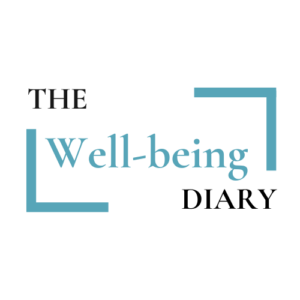10 Surprising Health Benefits of Being Barefoot

Key Takeaways
What are the health benefits of going barefoot?
- Improves foot alignment and posture
- Strengthens over 100 foot muscles
- Enhances balance and coordination
- Encourages a natural gait and movement
- Stimulates reflexology points on the feet
- Reduces inflammation through grounding
- Boosts mental clarity and mindfulness
- Promotes joint health and mobility
- Supports holistic wellness and natural body function
- Reconnects you with nature and your surroundings
In our modern society, wearing shoes is practically second nature. We slip them on from the moment we wake up until we head to bed. While footwear is essential for protection and fashion, we often forget that our feet were designed to function without them. Across cultures and centuries, people lived healthy, mobile lives without cushioned soles or arch supports. Now, science is catching up to what our ancestors instinctively knew: going barefoot has profound health benefits.
Barefoot health is more than a trend—it’s a return to the body’s natural state. From posture correction to mental clarity, here are 10 surprising benefits of being barefoot and how it contributes to holistic health.
1. Improves Foot Alignment
Wearing restrictive shoes can negatively impact your foot alignment over time, leading to issues like bunions, plantar fasciitis, and even knee or hip pain. When you’re barefoot, your toes can splay naturally and your arches can engage properly. This realignment creates a solid foundation that improves your overall body mechanics.
Better foot alignment isn’t just about appearance—it affects how your entire kinetic chain functions. When your feet are aligned, it helps prevent compensatory movements in your knees, hips, and spine, reducing strain and long-term injury risk.
2. Strengthens Foot Muscles
Our feet contain over 100 muscles, tendons, and ligaments, but wearing shoes weakens them over time. When you walk or move barefoot, your foot muscles have to work harder to support and stabilize you. This builds strength in the arch, heel, and even the toes.
Stronger foot muscles improve agility, prevent injuries, and enhance performance in activities like running, hiking, and dancing. For people with flat feet or weak arches, barefoot training can be especially beneficial for rebuilding the foot’s natural structure.
3. Enhances Balance and Coordination
The bottom of your foot is loaded with nerve endings that send signals to your brain, helping you understand your environment and maintain posture. Shoes dull this connection, but barefoot walking increases sensory feedback, improving your body’s ability to adjust to uneven surfaces and avoid falls.
This heightened awareness directly contributes to balance improvement, especially for older adults or athletes in training. Over time, better balance enhances coordination, agility, and even reaction time.
4. Encourages Natural Posture
Modern footwear, particularly those with raised heels, alter your body’s alignment by shifting weight forward. This creates a ripple effect that can misalign your spine and strain your joints. Walking barefoot promotes natural posture by allowing your body to stack in its ideal anatomical position.
Proper posture reduces back and neck pain, improves breathing, and even enhances digestion. When your body is aligned, your organs function more efficiently, and your movement feels more fluid and pain-free.
5. Promotes a Natural Gait
When you wear shoes, especially heavily cushioned ones, you tend to land on your heel with each step—a movement that sends shockwaves through your body. Barefoot walking or running promotes a natural gait, where the ball or midfoot strikes the ground first. This distributes impact more evenly and protects joints from unnecessary stress.
This shift in gait can prevent common injuries like shin splints, runner’s knee, and hip discomfort. A natural gait also allows for better energy efficiency and overall movement quality.
6. Stimulates Reflexology Points
According to reflexology, different areas of the feet correspond to various internal organs and body systems. When walking barefoot, particularly on natural surfaces like sand, grass, or pebbles, you naturally stimulate these pressure points. This can have positive effects on circulation, energy flow, and even immunity.
This natural stimulation offers a form of self-massage that enhances holistic health, helping the body detoxify and regulate itself without external interventions.
7. Reduces Inflammation Through Grounding
Grounding, or earthing, is the practice of making direct contact between your skin and the earth’s surface—typically through barefoot walking. Research suggests that grounding allows free electrons from the Earth to enter the body, acting as natural antioxidants that neutralize harmful free radicals.
This process may help reduce inflammation, improve sleep, lower cortisol levels, and enhance immune response. For people suffering from chronic pain or stress-related conditions, grounding can be a simple yet effective lifestyle tool.
8. Boosts Mental Clarity and Mindfulness
There’s something inherently calming about being barefoot in nature. It grounds you—both literally and emotionally. Walking barefoot requires attention to every step, which naturally encourages mindfulness. This kind of active meditation helps calm the mind, reduce anxiety, and sharpen focus.
The psychological benefits of barefoot movement aren’t just anecdotal. Numerous studies link nature exposure and physical contact with the earth to lower stress, improved mood, and enhanced mental performance.
9. Improves Joint Health
When your feet are misaligned or supported by artificial cushioning, it places extra stress on the joints—especially the knees and hips. Going barefoot, however, restores foot alignment, reinforces your natural posture, and helps distribute weight evenly across your body.
This more natural movement pattern reduces unnecessary wear and tear on your joints, helping prevent arthritis, bursitis, and chronic pain.
10. Reconnects You With Your Environment
Perhaps the most profound benefit of going barefoot is the reconnection with the world around you. When you remove your shoes, you begin to notice textures, temperatures, and terrain underfoot—elements that most of us are detached from in our daily routines.
This sensory immersion enhances your connection to your body, your surroundings, and even your emotions. In many ways, barefoot health embodies the essence of holistic health—aligning the physical, mental, and emotional aspects of well-being.
Final Thoughts
Going barefoot isn’t just for beaches or yoga studios. It’s a simple, powerful practice that restores natural movement, strengthens the body, and enhances your relationship with the world around you. From foot muscles to sensory feedback, from natural gait to grounding, the benefits are far-reaching and deeply rooted in human biology.
If you’re new to barefoot movement, start slow. Walk around your home without shoes, explore a grassy park, or take a mindful stroll on the beach. Listen to your body and let your feet gradually adapt to the freedom they’ve been missing.
In doing so, you might just step into better health—one barefoot step at a time.
FAQ
Is it really healthy to go barefoot?
Yes! Going barefoot helps realign your posture, strengthens foot muscles, and enhances balance and coordination, all contributing to better health.
What are the top benefits of barefoot walking?
Benefits include improved foot alignment, stronger muscles, better posture, joint health, reduced inflammation, and increased mindfulness.
Can walking barefoot help with anxiety or stress?
Absolutely. Barefoot walking, especially in nature, promotes mindfulness and grounding, which have been shown to reduce stress and boost mental clarity.
Is it safe to go barefoot outside?
While barefoot walking outdoors is generally safe, it’s best to start slowly, avoid hazardous surfaces, and build up your foot strength gradually.
What is ground or earthing?
Grounding is the practice of walking barefoot on natural surfaces to connect with the earth’s electrons, which may help reduce inflammation and improve sleep.
